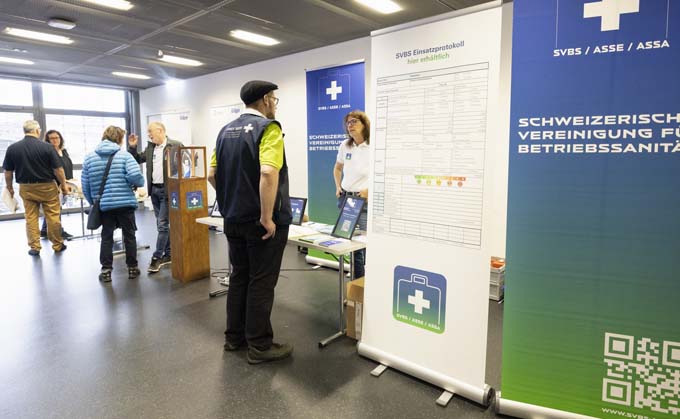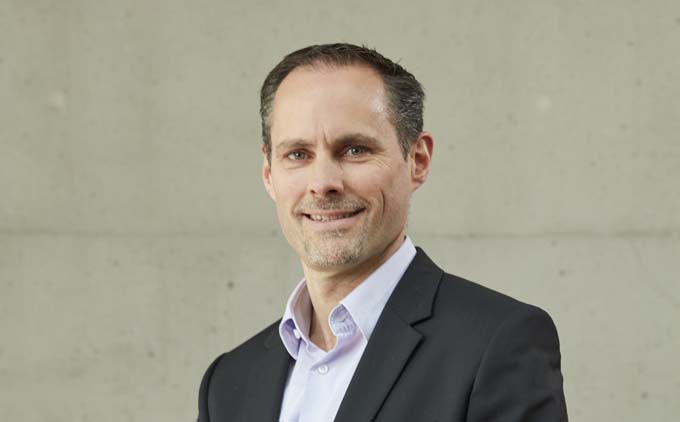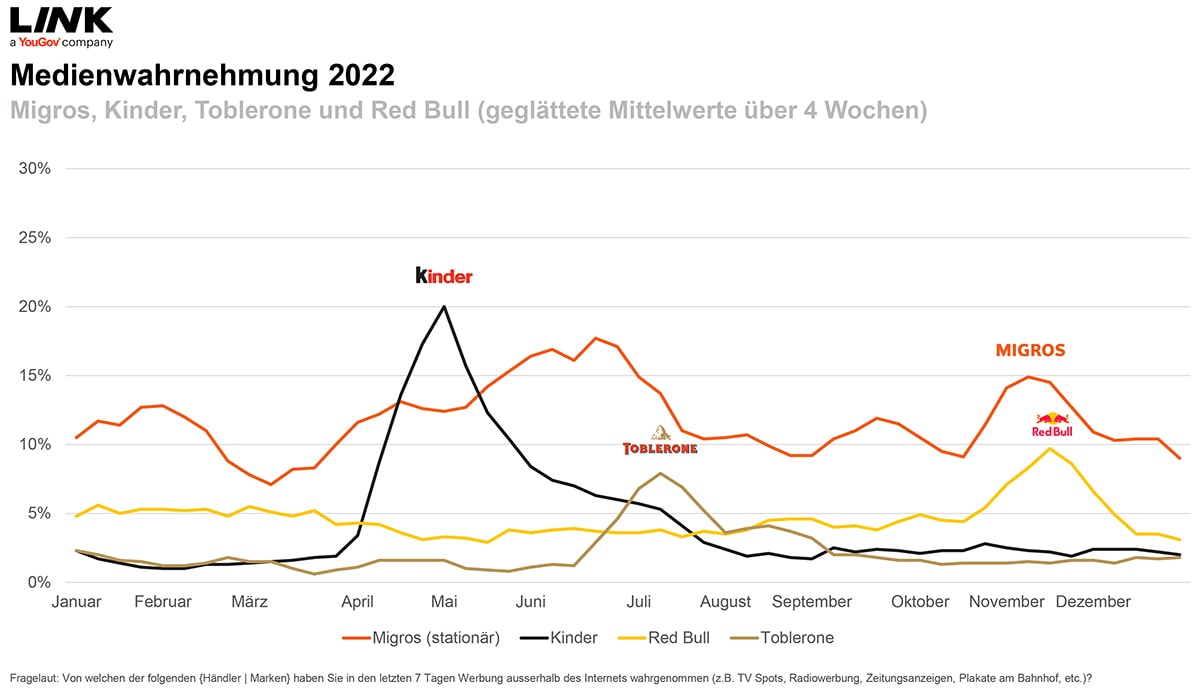 The six factors "Product & Service", "Innovation", "Profitability", "Sustainability", "Management" and "Employer" shape a company's good reputation. Among other things, a good reputation ensures new and loyal customers, attracts the best talent, increases social prestige and ensures broad support from all stakeholders. Information and communication in the media play a key role in shaping opinion. For the benchmark study "Reputation of health insurance companies in Switzerland", over 12,500 statements from Swiss media and online sources from the entire year 2022 have now been evaluated.
The six factors "Product & Service", "Innovation", "Profitability", "Sustainability", "Management" and "Employer" shape a company's good reputation. Among other things, a good reputation ensures new and loyal customers, attracts the best talent, increases social prestige and ensures broad support from all stakeholders. Information and communication in the media play a key role in shaping opinion. For the benchmark study "Reputation of health insurance companies in Switzerland", over 12,500 statements from Swiss media and online sources from the entire year 2022 have now been evaluated.
Twelve major health insurance companies analyzed
The benchmark study surveyed the reputation of the health insurers Assura, Atupri, Concordia, CSS, Groupe Mutuel, Helsana, KPT, ÖKK, Sanitas, Swica, Sympany and Visana. For the analysis, the performance of these companies was evaluated in the dimensions responsible for reputation. KPT achieved the top result with top scores in the areas of product & service, innovation and cost-effectiveness. Second-ranked Sympany was also convincing in Product & Service and Profitability and also achieved a top result in Management. Swica came third with very good scores in management and as an employer.
High visibility does not guarantee a good reputation
The reputation analysis was based on all publicly accessible Swiss media and online sources in the entire year 2022. It showed that the companies with the greatest media visibility -CSS, Visana and Helsana - do not automatically receive the best reputation.
"Good visibility only becomes a reputation driver in combination with a positive tone. That is why CSS, Visana and Helsana did not achieve good reputation scores everywhere despite their high visibility. KPT, on the other hand, is in the middle of the pack with visibility, but reaches the top spot thanks to high tonality scores," explains Lukas Zihlmann of Swissreputation.group.
"Innovation" and "blue-collar employer" as reputation drivers with potential
While topics relating to products & services, profitability, sustainability and management are relatively well represented, only 3.3 percent of the statements are assigned to the dimensions "innovation" and only 3.2 percent to "employer". KPT, Groupe Mutuel and Sanitas are convincing when it comes to innovation topics, whereas Helsana, ÖKK, Concordia and Assura have no media presence in this area.
When it comes to perception as an employer, Swica, Visana and Concordia stand out with the best scores. Sympany, ÖKK and Atupri, on the other hand, fail to achieve sufficient employer visibility in the media. "Due to the small number of innovation and employer topics, even a few communication measures in the two areas can have a comparatively large effect and consequently influence the overall reputation," concludes Zihlmann.
Sustainability as a topic not yet everywhere
Social, ecological and economic sustainability was the subject of 18 percent of the statements analyzed. This means that sustainability is the reputation dimension with the most mentions after product & service - a share of 40 percent of the statements. However, the ranking of the twelve health insurance companies shows that the good presence in itself with regard to sustainability topics does not yet result in strong reputation values for most companies. The reason for this is the exceptional performance of Visana, which combines very high visibility with top tonality scores.
"Since the values in the individual reputation dimensions are always based on the best company in each case, the results of the other health insurance companies, despite good performance in some cases, recede somewhat into the background," says Luka Zihlmann. "Visana is the clear benchmark in terms of sustainability. And for some companies, sustainability is simply not yet an issue."
Reputation measurement using AI
According to the study authors, the analyses in this benchmark study were carried out using AI-based, customized and extensively "trained" software. As a data basis, all publicly accessible media and online mentions of the twelve included health insurance companies were collected in the period from January 1 to December 31, 2022: These include journalistic online media, news portals, forums and blogs, but also social media such as YouTube, Twitter, Facebook and other sources.
An AI-assisted text analysis then semantically evaluated the collected statements and assigned them to the relevant reputation dimensions. Based on the number of statements and the assigned tonality (positive/neutral/negative), the reputation values of the six individual dimensions were determined. The overall reputation is calculated by adding the weighted individual values.
The complete benchmark study, which is subject to a fee, includes detailed results on the reputation of the 12 health insurers. Complete information on the overall study is available from Swissreputation.group.









 The six factors "Product & Service", "Innovation", "Profitability", "Sustainability", "Management" and "Employer" shape a company's good reputation. Among other things, a good reputation ensures new and loyal customers, attracts the best talent, increases social prestige and ensures broad support from all stakeholders. Information and communication in the media play a key role in shaping opinion. For the benchmark study "Reputation of health insurance companies in Switzerland", over 12,500 statements from Swiss media and online sources from the entire year 2022 have now been evaluated.
The six factors "Product & Service", "Innovation", "Profitability", "Sustainability", "Management" and "Employer" shape a company's good reputation. Among other things, a good reputation ensures new and loyal customers, attracts the best talent, increases social prestige and ensures broad support from all stakeholders. Information and communication in the media play a key role in shaping opinion. For the benchmark study "Reputation of health insurance companies in Switzerland", over 12,500 statements from Swiss media and online sources from the entire year 2022 have now been evaluated.



 With sustainable and innovative solutions, Property One wants to create more value for customers and inspire them for real estate. The competencies include investment, financing, development, execution and marketing as well as real estate and family office. For the tenth anniversary celebrations, the agency Rosarot was able to prevail in a pitch with the idea "Property One turns Ten" and was appointed anniversary concept designer.
With sustainable and innovative solutions, Property One wants to create more value for customers and inspire them for real estate. The competencies include investment, financing, development, execution and marketing as well as real estate and family office. For the tenth anniversary celebrations, the agency Rosarot was able to prevail in a pitch with the idea "Property One turns Ten" and was appointed anniversary concept designer.





 No, IRL is not the international country code of Ireland. The acronym stands for "In Real Life". And yet both interpretations have more in common than might be assumed at first glance.
No, IRL is not the international country code of Ireland. The acronym stands for "In Real Life". And yet both interpretations have more in common than might be assumed at first glance.
